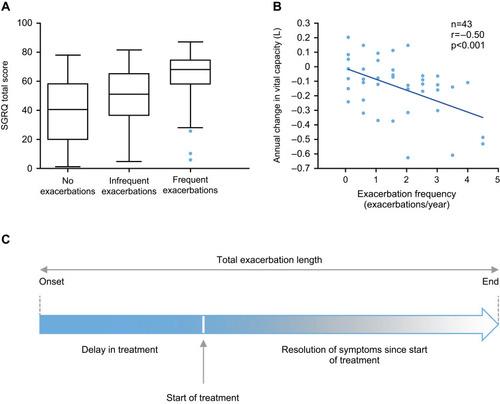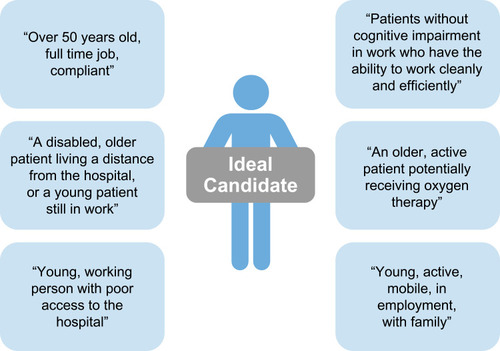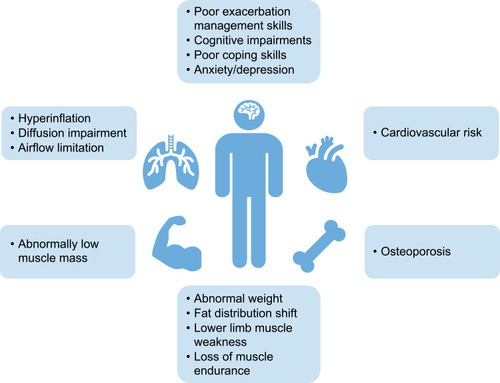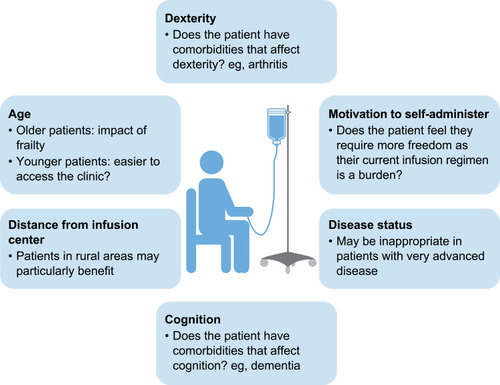Figures & data

Figure 1 Exacerbations have a negative impact on QoL and lung function in patients with AATD. (A) Box and whisker plot showing SGRQ total scores at 12 months in AATD patients with no, infrequent and frequent AATD exacerbations.Citation7 (B) The relationship between change in vital capacity and exacerbation frequency in patients with AATD.Citation26 (C) Rationale for early intervention with antibiotic therapy: Total exacerbation length is related to the length of time in delaying treatment.

Figure 2 Sputum color chart used at Queen Elizabeth Hospital, Birmingham, UK. In symptom-based diary cards, sputum color is graded 1–5. Samples graded 3–5 indicate increasing neutrophilic infiltration and concomitant elastase activity.

Figure 4 Selecting the right patient for self-administration – expert pulmonologist perspectives on the ideal candidate.

Figure 5 Treatable traits typical to patients with AATD that may affect approach to pulmonary rehabilitation. Data from Schols et al.Citation51


